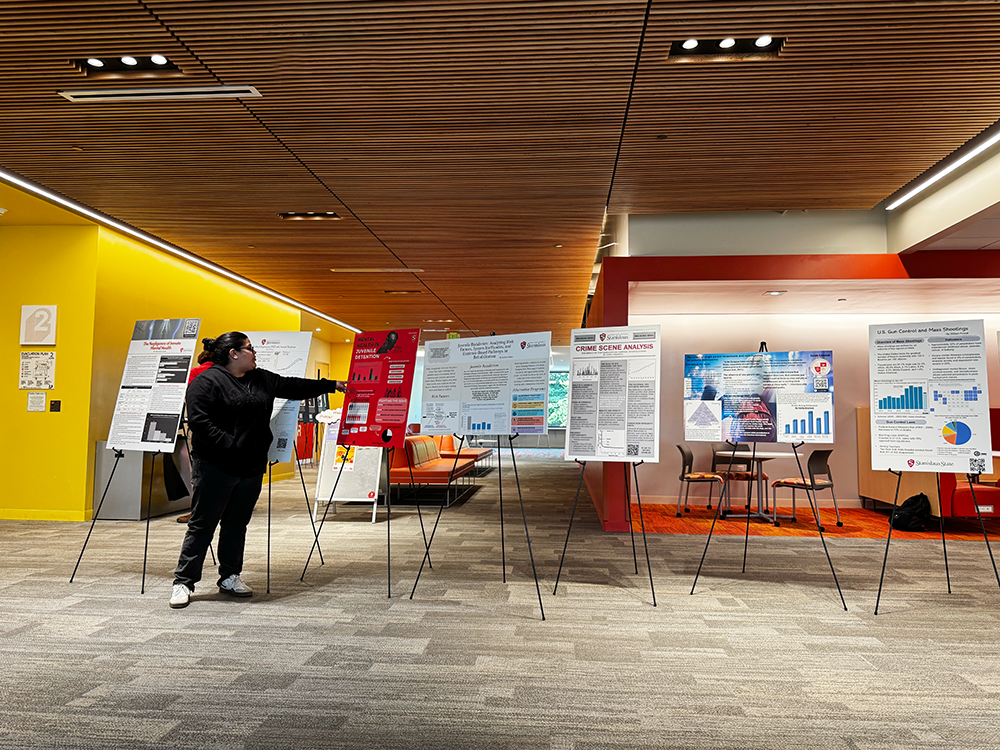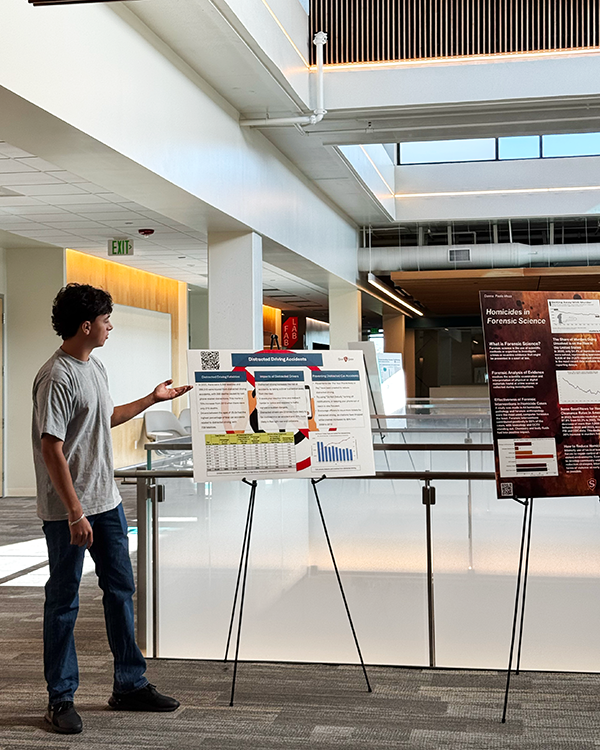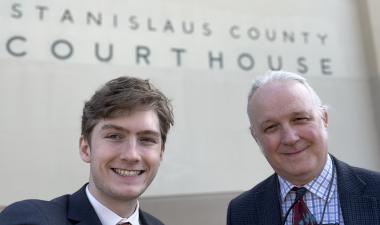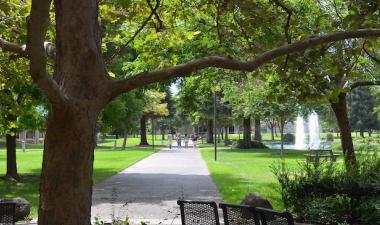
The University Library came alive as Stanislaus State criminal justice students transformed theory into inquiry at the CJ2255: Methods of Criminal Justice Inquiry poster symposium just before the spring semester's end. Throughout the week, mornings began with students presenting original research on topics spanning juvenile delinquency, forensic science, human trafficking and more. Each project served as a window into their evolving academic curiosity and personal drive to understand and impact the justice system.
Designed for lower-division students in the criminal justice program, CJ2255 introduces the fundamentals of criminal justice research and empowers students to move beyond opinion and anecdote to seek empirical evidence. Throughout the semester, they sifted through media coverage, government and NGO reports, and peer-reviewed articles, gradually shaping their research questions and refining their arguments. What began as an abstract idea took shape through poster drafts, feedback sessions and quiet persistence. Students gained not just technical knowledge but also essential workplace skills such as critical thinking, communication, collaboration and follow-through.
While the project's academic rigor is clear, the public nature of the display added an extra layer of motivation. Knowing their work would be showcased in a highly visible campus space encouraged students to refine their posters with care, present confidently and take pride in their project. More than just a research assignment, it became a constructive experience that fostered academic identity and confidence.
But much of the growth happened behind the scenes. The course structure prioritized connection as much as content, offering a space where students could explore complex issues with empathy and clarity. Through sustained encouragement and shared accountability, the classroom became a place of belonging. It helped students find their academic voice and see themselves as contributors to the field.
For many, the project took on personal meaning.
“My topic was juvenile delinquency and the impact of single-parent households,” said Jacob Edmond, a junior transfer student. “I grew up in a separated household and could have easily become part of the statistics. But I had strong role models, and now I’m a few semesters from a degree. My goal is to be able to reach kids like me and help them turn their lives around.”

Other students used the opportunity to explore future career paths. “I learned how to conduct research, analyze data and create something I was proud of,” said Audrey Tafoya, a sophomore double-majoring in forensic science and psychology. “It was incredibly rewarding to see my digital work turned into a large, professionally presented poster and to talk with others about a topic I care about.”
Maiah White, a junior transfer student concentrating in forensic science, echoed that connection. “There’s much more that involves criminal justice than what is shown on television,” she said. “This was the first time I had a poster professionally printed, and it felt cool to see my work displayed like that.”
Several students reported that the project changed their perspective, not only on their subject matter but also on their future. First-year student Isabella Medeiros said the experience prompted her to rethink her career goals. “I realized I want to pursue a higher degree beyond the bachelor’s, and it gave me clarity about what I do and don’t want.”
Even students who were initially hesitant found value in the process. “It felt powerful to share my work,” said Barbara Riner, a junior transfer student. “Someone may have learned something new from my presentation. That means a lot.”
The Methods of Criminal Justice Inquiry poster symposium reflects the transformation that occurs when learning becomes visible. Each project, whether focused on recidivism, forensic technology or rehabilitation, represented a bridge from classroom theory to real-world insight. More than a final assignment, the symposium marked a turning point. Students began to see themselves not just as learners but as future changemakers in a complex and evolving field.
To learn more about the program, visit the Stanislaus State Criminal Justice Department website.



